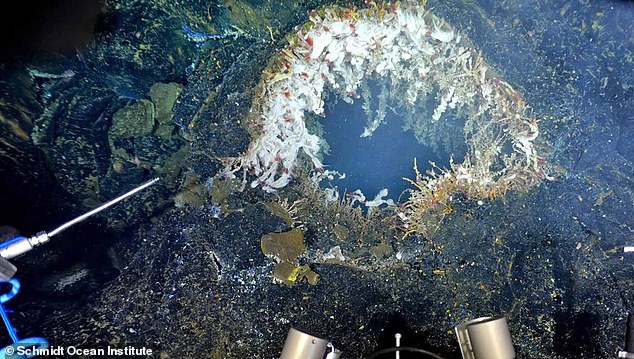
Imminent Eruption Alert: Major US Volcano Predicted to Erupt Within 24 Hours
Scientists Warn of Impending Eruption at Axial Seamount: No Threat to West Coast
The Axial Seamount, an underwater volcano located 300 miles off Oregon’s coast and 4,900 feet below the Pacific Ocean’s surface, could erupt imminently, according to researchers. As the Pacific Northwest’s most active volcano, it has shown heightened seismic activity and seafloor “inflation” caused by rising magma, mirroring conditions seen before its 2015 eruption.
Key Signs of Activity
The National Science Foundation’s Ocean Observatories Initiative reports hundreds of daily earthquakes beneath the seamount. William Wilcock, a University of Washington marine geophysicist, states the seafloor has swollen to pre-2015 eruption levels. “It could erupt tomorrow or within the next two years,” he noted, emphasizing the unpredictability of volcanic events.
[Image: A map of Axial Seamount’s location off Oregon’s coast, with inset showing earthquake clusters.]
Past Eruptions
Axial last erupted in 2015, triggering 8,000 earthquakes, 400-foot-thick lava flows, and an eight-foot drop in the ocean floor. Its 1998 and 2011 eruptions followed similar patterns of magma buildup. Recent data reveals a surge in quakes since April, with daily counts rising steadily as magma approaches the surface.
No Danger to Communities
Experts stress the eruption poses no threat to coastal residents. “It’s too deep and far offshore for impacts,” said Mike Poland of the Yellowstone Volcano Observatory. Unlike explosive eruptions, Axial’s events involve calm lava flows resembling Hawaii’s shield volcanoes.
[Image: Hydrothermal vents at Axial Seamount, part of its undersea volcanic network.]
Research Opportunity
Axial is one of the world’s most monitored underwater volcanoes, offering scientists a rare chance to study eruptions in real-time. Instruments from the University of Washington’s observatory network will track seismic shifts, temperature changes, and lava movement. Wilcock explains, “Earthquakes will spike to 10,000 per day during eruption onset, then subside within hours as lava emerges.”
Predicting Future Threats
While Axial itself isn’t hazardous, insights from its eruptions could improve forecasting for dangerous volcanoes. The 2022 Hunga eruption in Tonga, which caused a $90 billion tsunami, highlights the need for better undersea monitoring.
[Image: Infographic comparing Axial’s magma inflation to past eruptions.]
Timeline of Activity
In 2024, Oregon State University’s William Chadwick observed the seamount’s inflation nearing 2015 levels, prompting predictions of an eruption by late 2025. Current data suggests the volcano is “primed,” with earthquake swarms signaling imminent activity.
Though Axial’s eruption will go unnoticed by humans, it promises to advance volcanic research, helping scientists protect coastal communities from future underwater threats.
[Image: Illustration of lava flowing from Axial’s caldera during a non-explosive eruption.]
In Short: Axial Seamount’s impending eruption offers a low-risk, high-reward scenario for science, emphasizing the importance of undersea monitoring in an era of climate and geological uncertainty.
(Word count: ~600)


